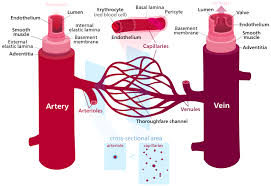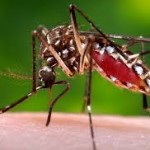Different types of blood vessels in the human body
Blood takes a very long trip inside the human body. The blood vessels accomplish this task of carrying blood to all the organs of the body from and back to the blood pumping station or the heart. The study of blood vessels is called angiology. The heart, the blood vessels and the blood together are called cardiovascular system of the body. About 5 liters of blood circulates within the human body. Blood carries oxygen, nutrients, hormones vital for the functioning of different organs and also cellular waste products from the organs.
There are four different types of blood vessels – arteries, veins, capillaries and sinusoids. Arteries carry blood from the heart to the tissues of the body while veins carry blood from the various organs of the body to the heart. Veins carry impure or de-oxygenated blood to the heart except the pulmonary veins which carries oxygenated blood (pure blood). Veins are usually found closer under the skin and arteries are found deeper within the body. Veins are less muscular while arteries are more muscular. Veins collapse when the blood flow stops. Arteries remain open even if there is no blood flow due to its muscular structure.
Capillaries are smallest, thinnest and most numerous blood vessels within the tissues of the body. The capillary's primary function is to permit the exchange of materials between cells in tissues and the blood. From the capillaries, the blood flows into the veins. Sinusoids are extremely small vessels located within the liver, spleen and bone marrow.
The cardiovascular system is a closed-loop system, such that blood is pumped out of the heart through one set of vessels (arteries) and then returns to the heart in another (veins). The smallest of the arteries eventually branch into arterioles and veins into venules. Microcirculation is a term coined to collectively describe the flow of blood through arterioles, capillaries and the venules. Thus blood takes a circulatory path by travelling from the heart via arteries to smaller arterioles, then to capillaries or sinusoids, then to venules, to veins, and back to the heart.









